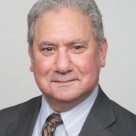GlobeSt.com: Man, you're busy. What's happening?
Behringer: It's a very interesting real estate market right now. The capital flows are significant, and other investment alternatives don't necessarily look that attractive today, although the stock market has been improving. Nevertheless, there'll always be an allocation--whatever size allocation that is--to real estate, and to the extent we think it's going to slow down we'll just have to increase our market share of those acquisitions.
GlobeSt.com: And what's your take on a potential slowdown?
Behringer: We know there's the possibility, but our funds, particularly our core funds, are 96% leased, and we have relatively long-term leases and steps in our rent roll. Consequently, if there is a slow down, hopefully it will be short-term and something we can weather. If there is a slowdown, we're not that concerned about leasing up vacant space to achieve our pro forma numbers.
GlobeSt.com: How geographically diverse are your core investments?
Behringer: We're in 30 markets in the US, so we're very diversified. We naturally want to be in those cities where everyone else wants to be, the 24-hour gateway cities. We very much like Washington, DC; New York City; San Francisco; Seattle; and San Diego. But the cap rates are very low in those markets and in order to achieve our portfolio objectives in terms of current and total return we do look at secondary markets, and we're looking now at St. Louis, Philadelphia and Charlotte. When we go into those markets we look for the best product, product that's stabilized and well-leased and has a quality rent roll with no near-term rollover. That allows us to enhance our yields on a portfolio basis.
GlobeSt.com: But, given the competition, alternative markets are less alternative than they used to be, no?
Behringer: They're becoming very crowded. Everyone is looking for yield. There's only so much product to go around in the major markets, and a lot of those assets have traded in recent years at record prices, so they're not coming back to market any time soon. Consequently, there's going to be much less availability in those key markets where everyone wants to be.
GlobeSt.com: So do you get pushed farther out on the alternative scale?
Behringer: We've tried to get into markets like Charlotte and Philadelphia and St. Louis ahead of our competitors, but there are a number of top-tier buyers in those markets right now. We have a presence in Minneapolis, and all of a sudden you have a lot of foreign investment capital looking there, as well. Again, they're looking to make part of their allocation in the real estate sector and they have to broaden their universe of markets just to achieve that objective.
GlobeSt.com: What does the value-add portfolio look like?
Behringer: In our value-add and opportunistic funds, we're diversified in terms of product type. We do office, retail, hospitality, industrial and multifamily properties and those are more repositioning opportunities with the relatively short-term hold of four to six years. Our OpREIT--Behringer Harvard Opportunity REIT I--is a $400-million equity offering. We were the first to introduce a value-add opportunistic fund within a REIT structure. It's a bit problematic because we have to hold these assets for four years or longer to avoid losing our REIT status. But the types of investment opportunities we're looking at are that type of hold.
GlobeSt.com: Actually, you have a couple of opportunity funds. What sort of assets would we find in them?
Behringer: We did a major repositioning on what is now the Lakeway Resort & Spa in Austin, which is turning out to be a very successful investment. We bought the Westwood Hotel, a former Doubletree, in Beverly Hills, and we're converting it to a Palomar. We redeveloped the former Sante Fe Hilton in Dallas, which was pretty much a derelict hotel. We recently opened it up as a Palomar and developed 60 condominium units there. We're also developing resort condos in Telluride, CO, and we've made some foreign investments in an office building in Amsterdam and multifamily in Hamburg.
GlobeSt.com: Talk about those European investments. What is the genealogy of your relationship with HCI?
Behringer: I've known Oliver Georg, the managing director, for probably 11 years. When we looked at broadening our investment opportunities with the possibility that domestic opportunities might no longer be available, we decided to plant some seeds and develop relationships in Europe and start a slow process of acquiring assets there.
GlobeSt.com: How is the investment strategy different in Europe?
Behringer: There's an abundance of capital chasing core product there, so were not a core player there. But Europeans, being as conservative as they are, were never as aggressive about value-add or opportunistic investments. We saw that as an opportunity for our funds and started with a small acquisition in Amsterdam. That lead to more dialog with HCI about working together to broaden the investment platform in Europe. They serve as our institutional partner, co-investing on a relatively equal basis and giving us management and acquisition talent on the ground. What we see as the exit in Europe is stabilizing these assets, and there's a great abundance of capital looking for stabilized assets in Europe.
GlobeSt.com: How will the coming UK and German REIT regimes help your strategy?
Behringer: With the coming of REITs, there'll be even more capital chasing core, but just as in the US, institutional investors there who can't find core may look to acquire value-add opportunities and leasing them up to core. They'll have to go a little further on the risk scale. Also, as everyone knows, it's very difficult to buy portfolios in Europe, so if we assemble a portfolio of assets, we may be able to get premium pricing because of the additional capital flowing into the markets by virtue of the REITs.
GlobeSt.com: Break down your projections of foreign investments for us, please.
Behringer: In 2006, we will have acquired $1.7 billion, of which less than $50 million will be foreign. We're moving slow. On a relative basis it's a very small percentage of our total capability, and most will continue to be in the US. But one of the reasons for seeding the European platform was if we stopped seeing US opportunities, we would already have relationships in Europe and we could ramp up quickly.
GlobeSt.com: With Europe starting up, any plans for Asia?
Behringer: Oh, we hear a lot of interesting things about Asia, and we actually met with a Chinese delegation a few weeks ago that wants us to invest in Beijing. But we have a lot on our plate right now and while Asia is part of our future, it won't be for many years.
© Touchpoint Markets, All Rights Reserved. Request academic re-use from www.copyright.com. All other uses, submit a request to [email protected]. For more inforrmation visit Asset & Logo Licensing.







